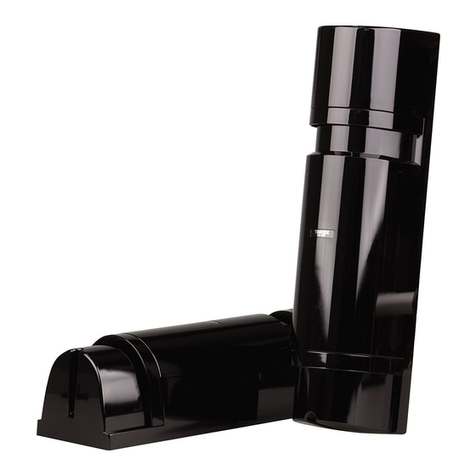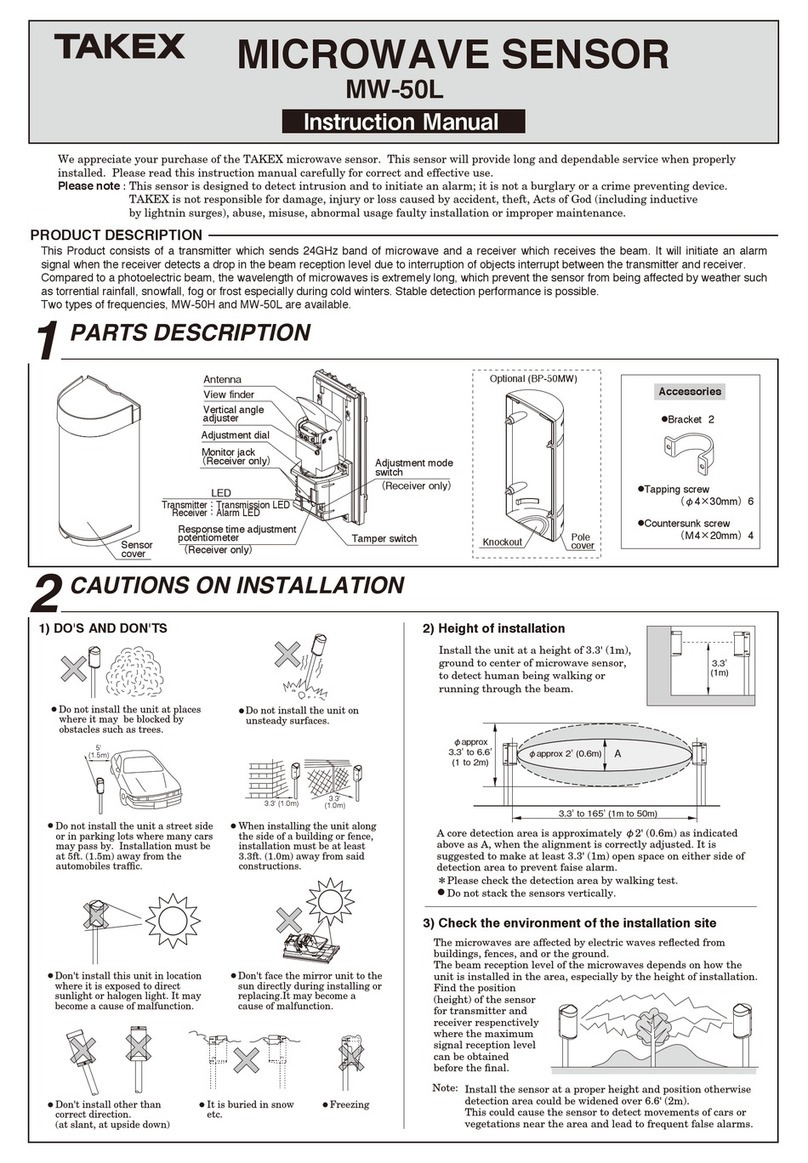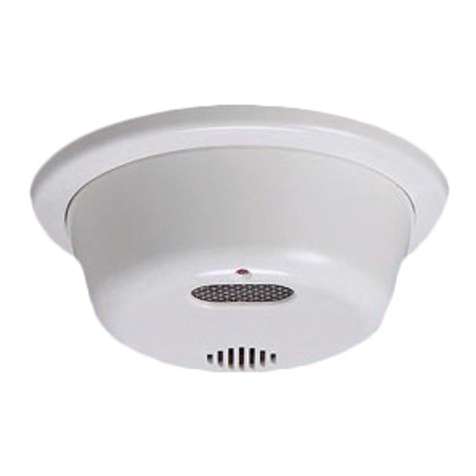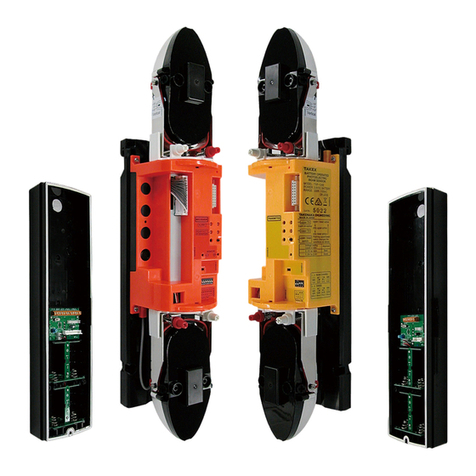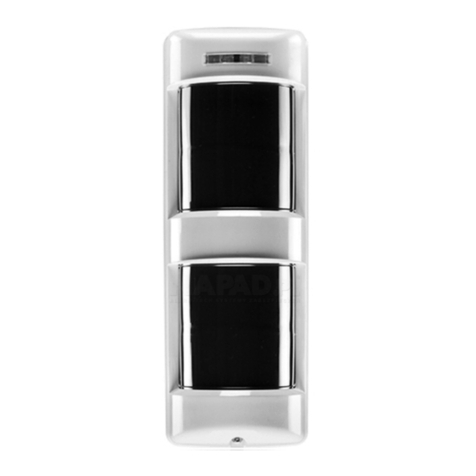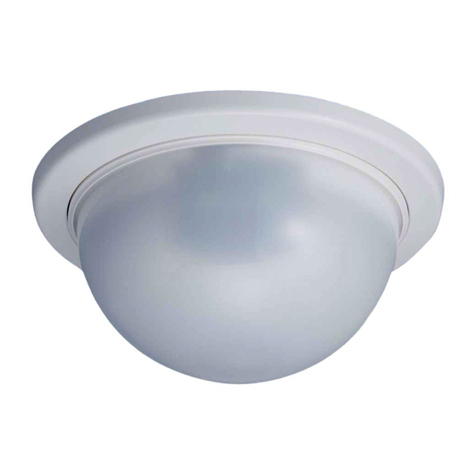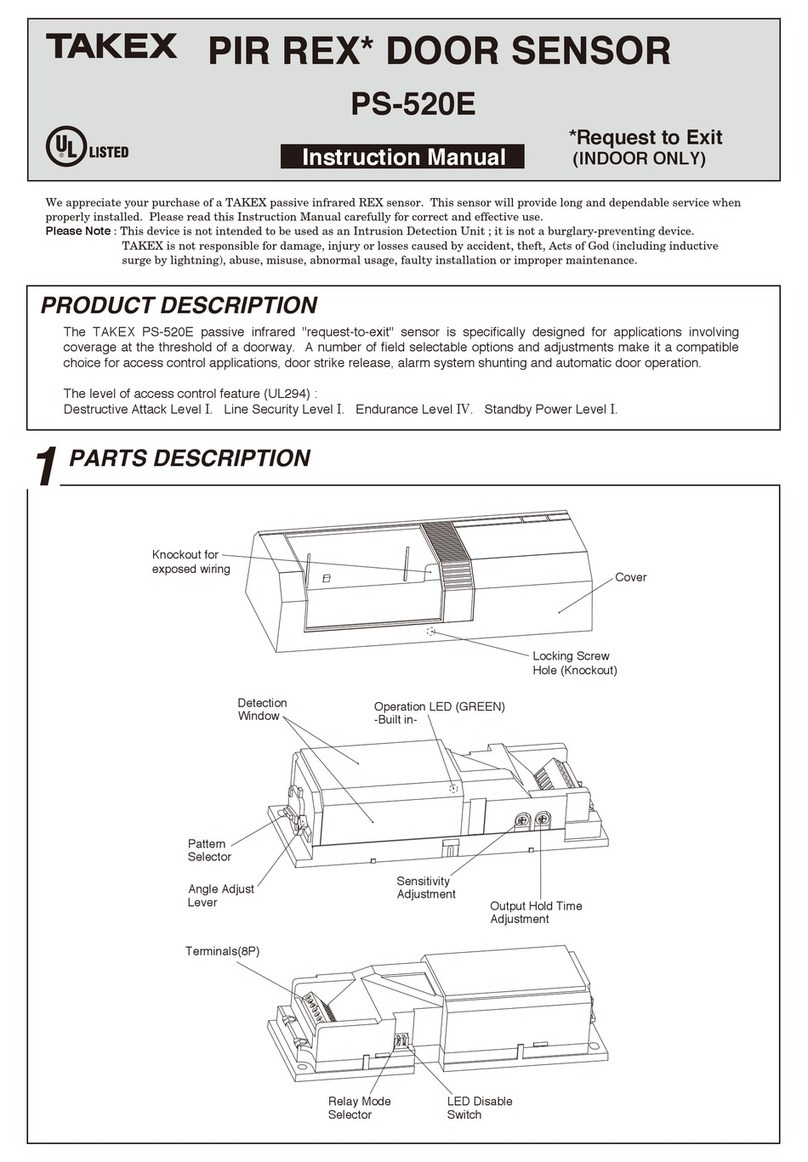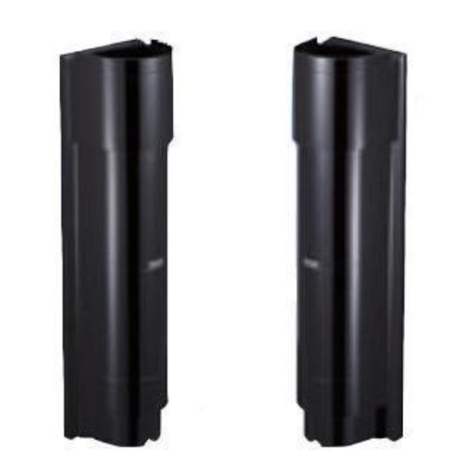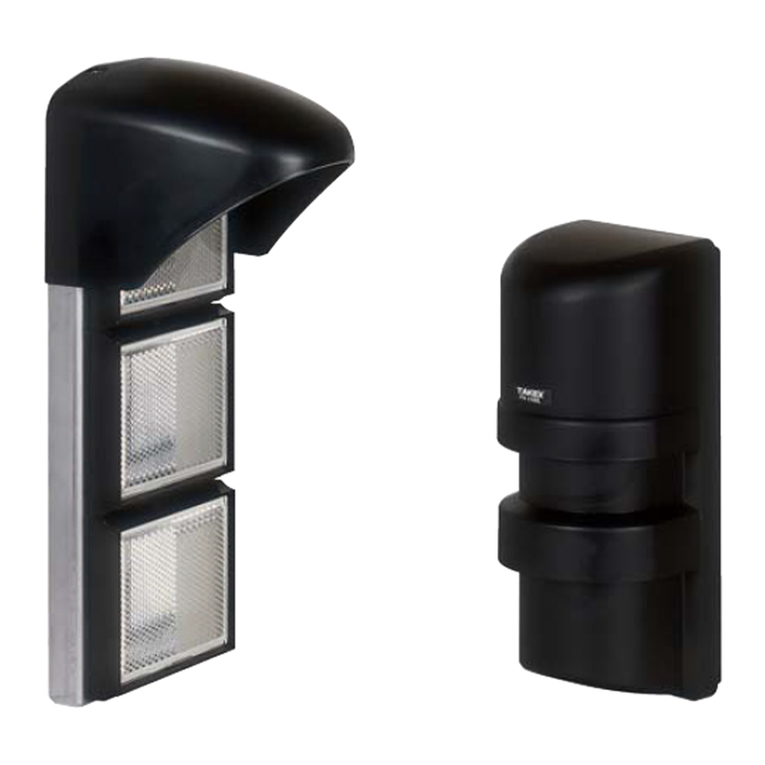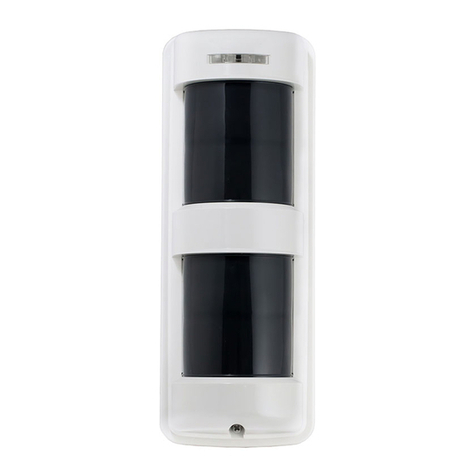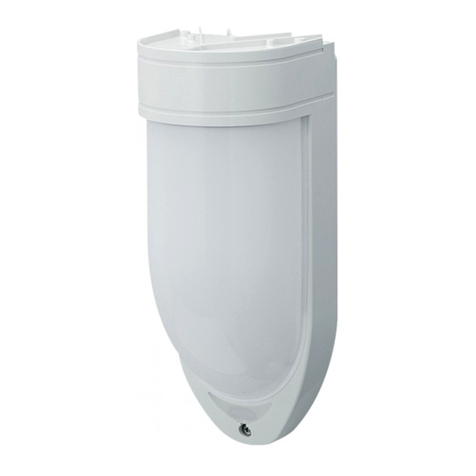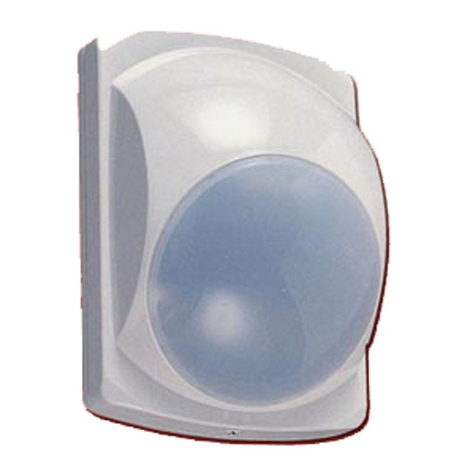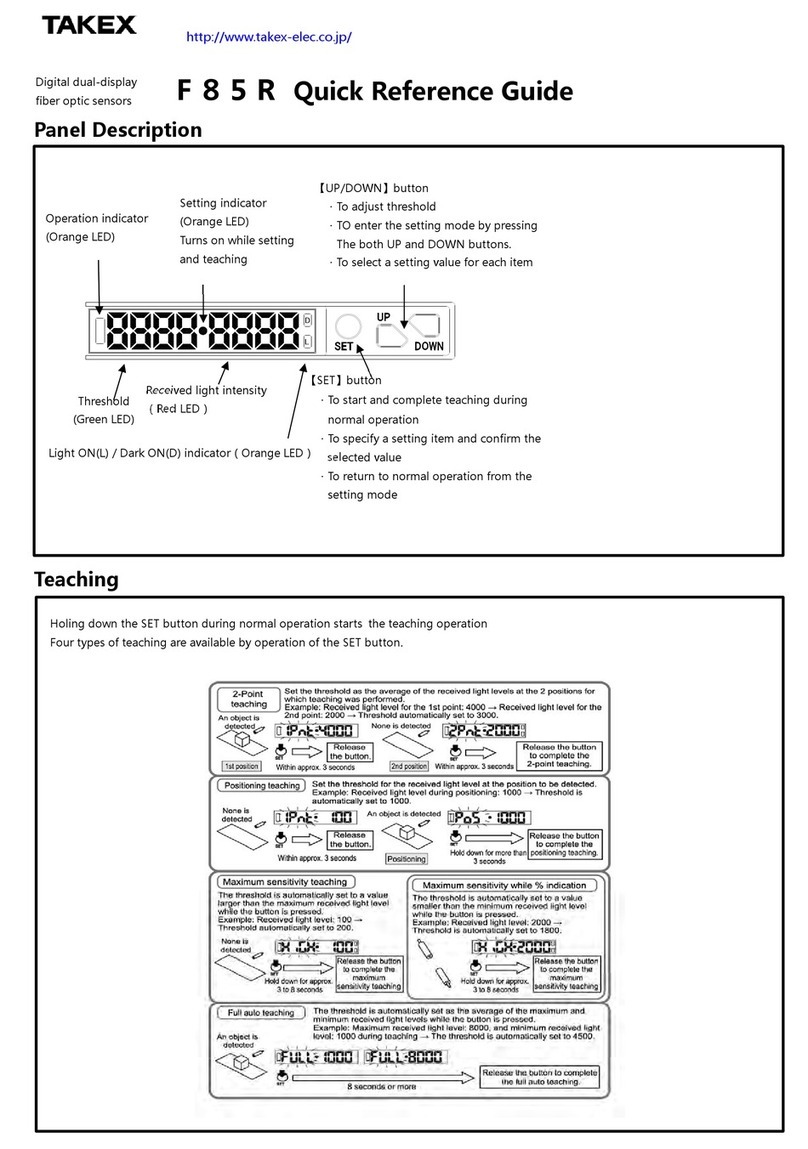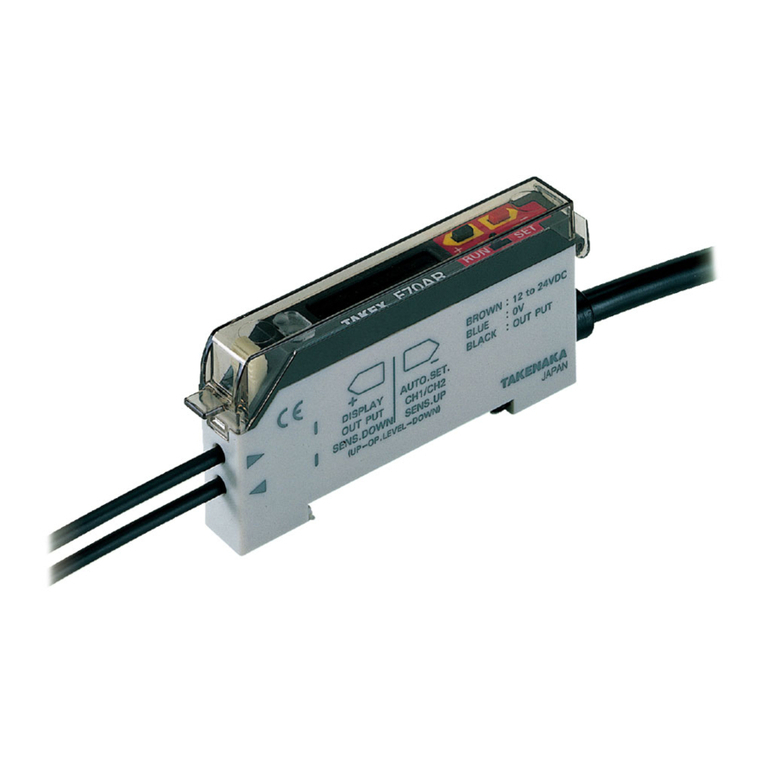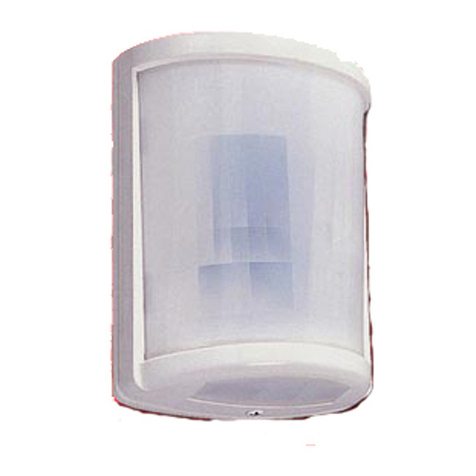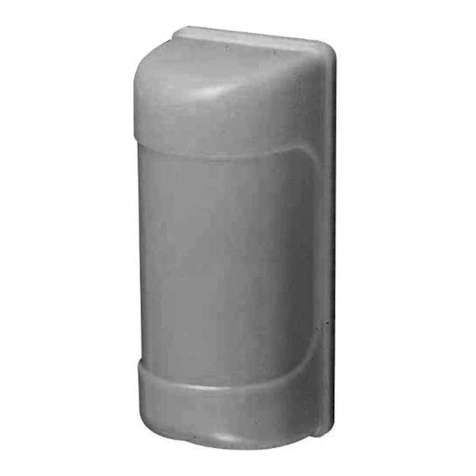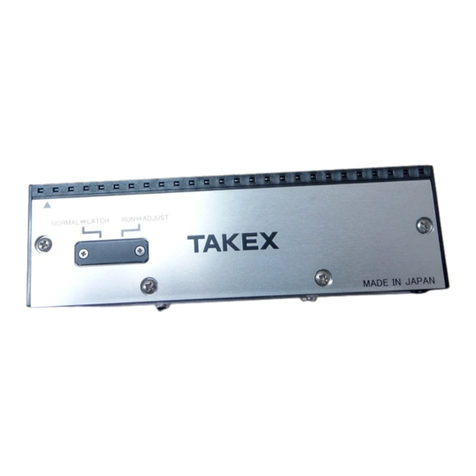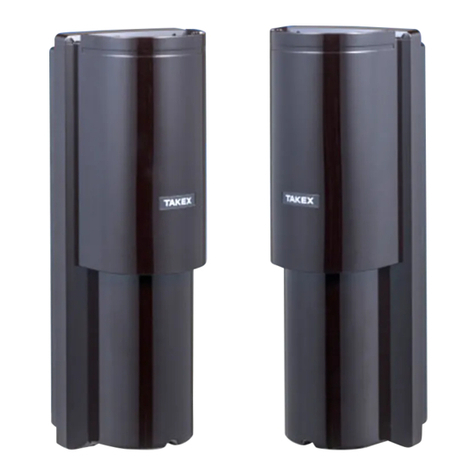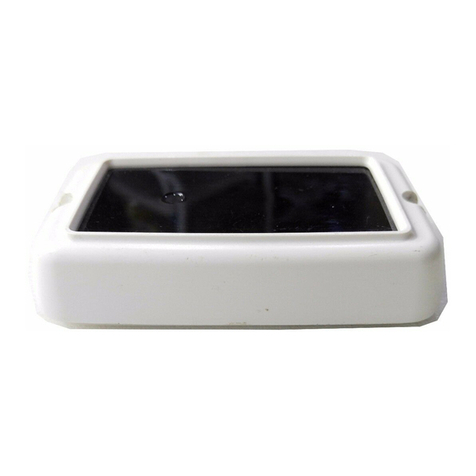
Light reception authorization LED: Red
(Upper/Lower)
Monitor jack
Sound check switch (Factory setting: OFF)
Transmitter power changeover switch
(Factory setting: H)
Transmitter LED switch
Transmitter channel changeover switch
(Factory setting: 1CH)
Detection response time adjustment volume
Upper/lower changeover switch
Upper/lower changeover switch
[Transmitter]
[Receiver]
Not used
“8 EXPLANATION OF FUNCTIONS
(8-1 MODULATION FREQUENCY
CHANGEOVER FUNCTION)”
“8 EXPLANATION OF FUNCTIONS
(8-2 TRANSMITTER POWER
SELECTION FUNCTION)”
“8 EXPLANATION OF FUNCTIONS
(8-6 UPPER/LOWER CHANGEOVER FUNCTION)”
(Factory setting: Standard position [0.05 secs])
“8 EXPLANATION OF FUNCTIONS
(8-6 UPPER/LOWER CHANGEOVER
FUNCTION)”
“8 EXPLANATION OF FUNCTIONS
(8-5 DETECTION RESPONSE TIME
ADJUSTMENT FUNCTION)”
“8 EXPLANATION OF FUNCTIONS
(8-3 ALARM MEMORY DISPLAY FUNCTION)”
“8 EXPLANATION OF FUNCTIONS
(8-4 SOUND CHECK FUNCTION)”
Alarm memory changeover switch (Factory setting: Remote)
Light reception channel changeover switch (Factory setting: 1CH)
“8 EXPLANATION OF FUNCTIONS
(8-1 MODULATION FREQUENCY CHANGEOVER FUNCTION)”
2
NAMES OF OPERATION SECTION
1-3
Transmitter LED: Red
(Upper/Lower)
Alarm LED
: Red
Auto gain
lock switch
Sensitivity
attenuation LED
: Red
Memory LED
: Red
Do not use the sensors powered with a voltage level other
than the indicated power supply voltage specied (between
10 to 30V DC). Doing so may cause a re or electrical shock.
Do not connect a device that exceeds the capacity shown to
the output contact of this device. Doing so may cause a re or
electrical shock.
Do not touch the terminal section with wet hands.
Doing so may cause an electrical shock.
Do not disassemble or modify this device. Doing so may cause
a re, electrical shock, or malfunction of the device.
If smoke or an abnormal odor or sound is found, leaving it
unattended may cause a re or electrical shock. Immediately
turn off the power to the device and conrm that the abnormal
state has been corrected, and then ask the place of purchase for
repair.
EXAMPLE OF INCORRECT INSTALLATION
2-1 DON'TS Do not install as shown below. This will cause
erroneous detection or detection failure.
OPERATING PRECAUTIONS This manual describes the precautions to be observed for safe operation of this
device by classifying them into the following categories. As these are important, be
sure to read and strictly observe them.
Warning
Caution
Description of the Display
Indicates information that if ignored and the device is handled incorrectly, may result in death or serious injury.
Indicates information that if ignored and the device is handled incorrectly, may result in injury or damage to property alone.
This symbol indicates a prohibited action, with the specic action shown near the symbol.
Indicates the useful information.
Example: Do not disassemble
Warning
Caution
(1) When using multi-level protection, use sensors of the same model for both upper and lower sensors, and set the
same transmission power (H/L) for all of them.
(2) Using these sensors together with sensors from a different series (e.g. PB-HF-KH) may cause interference between
the sensors.
Do not install this device in a location that cannot support its
weight. Doing so may cause the device to fall and cause an
injury or malfunction of the device.
Installation in locations
shaded by trees etc.
Installation in location where
strong light such as sunlight or
light from vehicle headlights can
directly enter the receiver
Installation in areas where
objects that move with the
wind (the laundry etc) can
obstruct the optical axis
